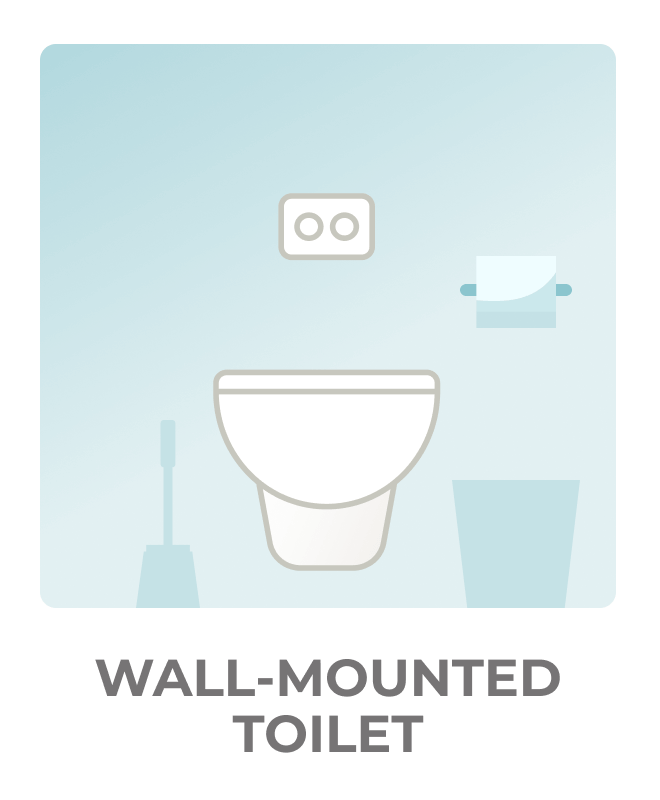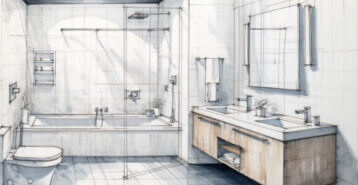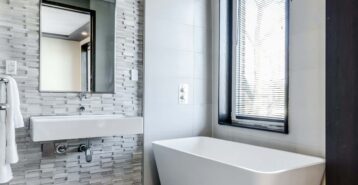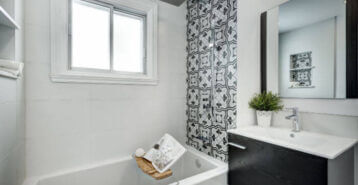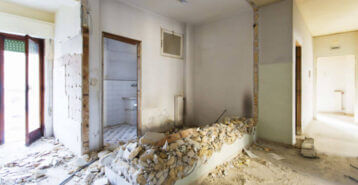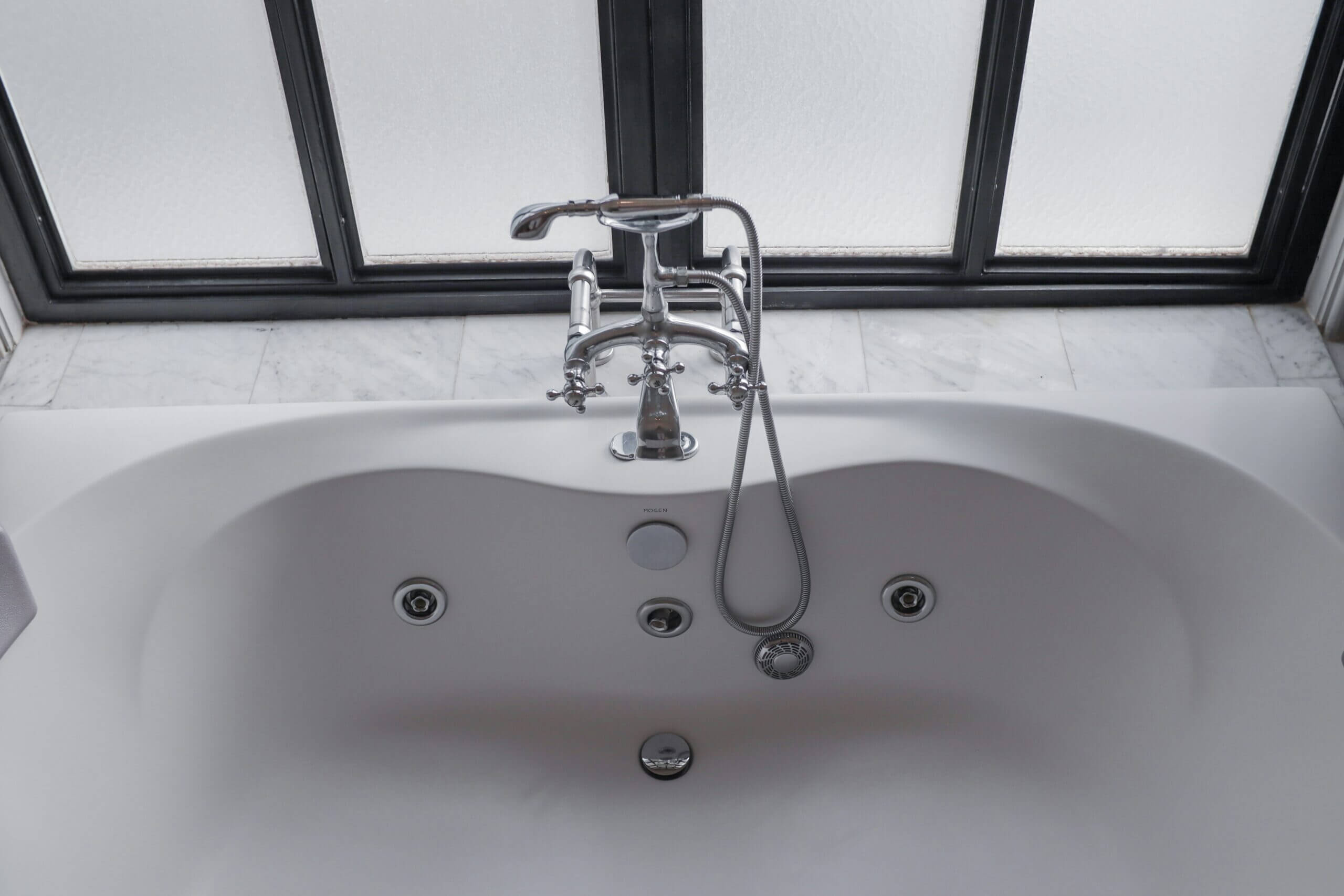Buying a new toilet might not be the most exciting purchase you make when renovating the bathrooms in your home. But upgrading an old toilet – or at least ensuring your toilet is in good working condition – is an essential part of any bathroom remodel project. Modernize created this guide to help homeowners understand the many different types of toilets, important toilet features, toilet sizes, and much more.
New toilets have a host of features that make them far superior to dated models, such as:
- Flush ratings to decrease water usage and save you money
- Better flush valves and trapways
- Comfort height options
After you’ve researched toilet types for your home, we can help you find a reliable bathroom remodel contractor in your area to get it installed.

Does My Bathroom Need a New Toilet?
Homeowners may be tempted to shave some bathroom remodel costs by keeping their old toilet. But if it is older than 1994 or shows visible signs of wear, there are a lot of good reasons to replace your toilet.
Here are five signs you may want to replace your toilet:
- It leaks.
- Water flows constantly (constantly running).
- It’s constantly clogging or overflowing.
- The handle doesn’t work.
- Hissing inside the tank.
Each of these issues could lead to poor toilet performance, or worse – water damage in your home.
Toilets made before 1994 are also huge water-guzzlers and tend not to be eco-friendly. On the other hand, toilet designs made after that date have a maximum flush rate of 1.6 gallons per minute.
A new toilet can mean water savings, lower water bills, increased comfort, and enhanced visual appeal to your remodel.
How Much Does Replacing a Toilet Cost?
The national average cost for a new toilet is $704 as of 2025. Installation costs for higher-end models can run between $800 and $1,500 depending on the toilet’s features.
There may be additional costs involved to install a new toilet. For instance, if you are replacing an old toilet, there may be removal and disposal labor fees involved.
Any plumbing issues or water damage lurking behind the walls or floors of the toilet can also cost extra to fix – but you’ll be glad you detected and fixed it. Be sure to request a quote from your local contractor to ensure you understand the total cost of the project.
Modernize recommends comparing three to four quotes to find the best professional and price.
Types of Toilets
A good place to start when shopping for a new toilet is to determine which type of toilet best meets your needs. There are many different types of toilets. We will dive into the two most common types: floor-mounted toilets and wall-mounted toilets.
Floor-Mounted Toilets
Floor-mounted toilets sit directly on the bathroom floor. They are usually affixed to the toilet plumbing flange by bolts screwed into the floor.
These toilets are easy to install and maintain. They are found in the majority of U.S. homes. Since they take up more room than wall-mounted models, floor-mounted toilets are best for larger bathrooms. However, they can collect more bacteria and germs around the base, so they require a bit more effort when cleaning.
When shopping, you’ll have to decide between a one-piece or two-piece model. One-piece floor-mount toilets tend to weigh more. But they also can be more hygienic because there are fewer nooks and crevices for bacteria to accumulate. They also offer a sleeker look than two-piece models. Two-piece toilets, meanwhile, come in a wider range of sizes and tend to cost a bit less.
Wall-Mounted Toilets
Wall-mounted toilets are sometimes called floating toilets, and for a good reason. They lack a pedestal and are anchored to the bathroom wall at the back of the toilet, leaving free space underneath the unit. A compact water tank and waste piping are hidden within the wall. This gives this type of toilet a sleek, modern design that pairs well with contemporary bathroom remodel design schemes.
Wall-mounted toilets make cleaning a breeze. You won’t have to wipe around the base like you do with floor-mounted models. Floating toilets are mounted to a steel framework that’s hidden behind the drywall that can support at least 500 pounds.
Wall-mounted toilets offer a wide range of design styles. They typically come at a higher cost than more common floor-mounted toilets, due to the more difficult installation process and the extra parts (tank, framework, toilet and waste carrier) that are required. A licensed plumbing contractor will also likely have to reroute existing plumbing to accommodate the new plumbing layout. Depending on the framework, mounting heights can be either 15 inches or 19 inches from the ground.
Types of Toilet Flushing Systems
Toilets come with several different types of flushing systems and flush valves. The best toilet for you should take into account the toilet’s flushing system as well as MaP score (more on this topic below). Below are the five most common flushing systems for toilets.
Single-Flush Toilets
This is the most common type of residential toilet flushing system, especially in older homes. The one-flush mechanism uses gravity to empty the entire tank and bowl when you depress a lever or button.
-
Pros
- Very common, so it is easy to find replacement parts
- Can be cheaper than other types of flushing systems
-
Cons
- Use much more water than other types of flushing systems
- Single-flush toilets can lead to much higher water bills
Dual-Flush Toilets
Dual-flush toilets typically have two buttons on top of the tank, rather than a single-action level. One button flushes liquid waste, and the other flushes solid waste. This flushing system can help to conserve water.
-
Pros
- The liquid waste flush mechanism typically uses less than a gallon of water
- Less water used means lower water bills
-
Cons
- Much less common than single-flush models, so repair parts may be difficult to source
- Higher purchase cost than a single-flush toilet
Pressure-Assisted Toilets
Most toilets rely on gravity to move flushed water. Pressure-assisted toilets, however, use compressed air in the tank to send high-velocity water through the flush valve to quickly clear the toilet bowl. This type of toilet is often found in restaurants, schools, and similar high-use areas. But they can also be installed in the toilet in your bathroom.
-
Pros
- The increased flow rate helps reduce incidences of toilet clogging
- Drain lines stay clearer
-
Cons
- The flushing sound is much louder
- Replacement parts may not be readily found at a nearby home improvement center
- Usually cost more than gravity-flow toilets
Touchless Flush Toilets
These toilets look like common single-flush toilets, but they have advanced flushing systems that don’t require users to touch a lever or button to flush the unit. Some flushless toilets use sensors that recognize when the user has stepped away to activate the flushing mechanism, while others require a hand wave in front of the flushing sensor.
-
Pros
- Touchless means less germs
-
Cons
- Over-sensitive sensors can trigger needlessly and waste water
What is the Maximum Performance Score for Toilets?
You may be further surprised to learn that toilets have a flush-rating system based on their performance. Maximum Performance (MaP) testing provides consumers with a score that represents the maximum amount of waste that can be removed in a single flush. This score is a good indicator of whether or not your toilet can effectively do its job.
More than 160 toilet manufacturers voluntarily participate in the independent MaP testing and ratings program.
Some low-flow toilets may have lower scores, but that does not necessarily mean a low-flow toilet is then not right for your home. Similarly, pressure-assisted toilets may have very impressive MaP scores, but not be a good fit for your budget or what you need in your home. Be sure to consider all factors as you pick a new toilet for your bathroom.
Standard Toilet Sizes
Before you start shopping for a new toilet, know the size of your old unit so you can get the correct replacement toilet.
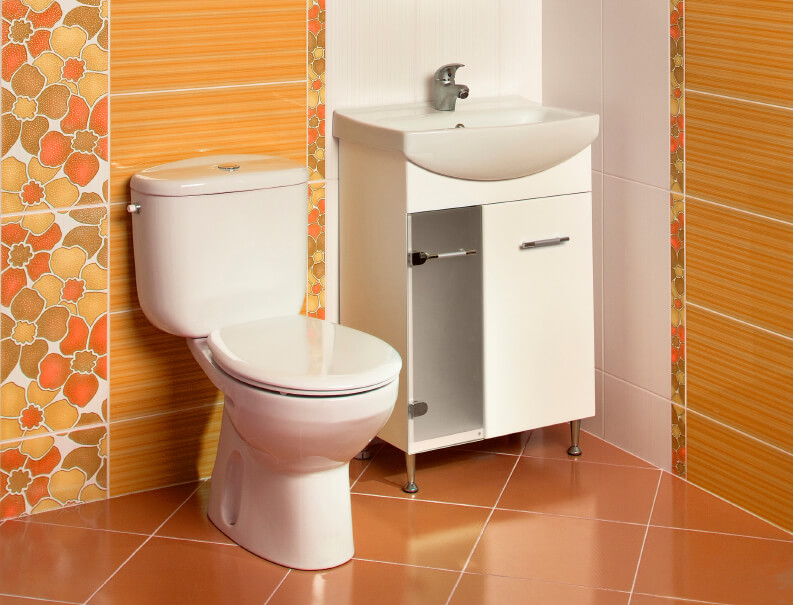
It is important to know the height, depth, width, and most importantly, the rough-in measurement – the distance from the mounting bolts to the rear wall. The standard distance is 12 inches, but the rough-in can also be 10 inches or even 14 inches.
Standard measurements for a traditional floor-mounted toilet are:
- Depth: 27” to 30”
- Seat height: 14” to 16”
- Overall height: 21” to 31”
- Width: 20”
Width is determined by the widest part of the bowl, rather than the size of the back tank, which is wider.
ADA-compliant toilets have a mandatory 17” to 19” seat height that makes it easier for people with disabilities or limited mobility to use the toilet.
Toilets come in a range of sizes and shapes, though. If you are unsure about what size toilet your bathroom needs, a licensed contractor can help you decide on the toilet dimensions that best fit your style and space.
Options for Water-Saving Toilets
Toilets are the largest source of water use in the home, the Environmental Protection Agency reports. Toilets can account for as much as 30 percent of your home’s annual water consumption – especially pre-1994 toilets that can use as much as six gallons per flush.
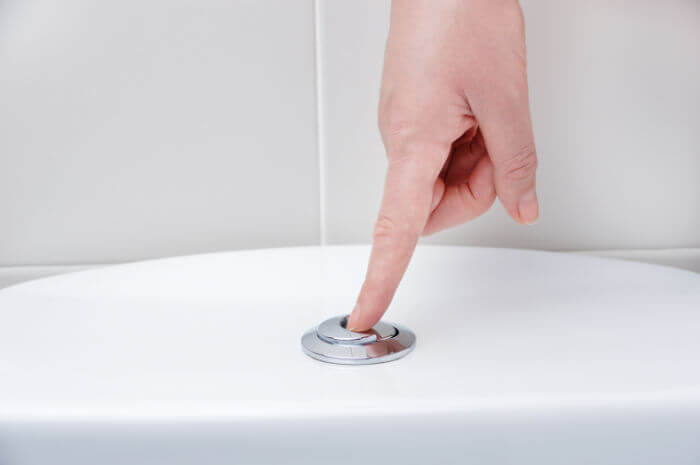
Look for a WaterSense-labeled toilet, which uses just 1.28 gallons per flush rather than the federal standard of 1.6 gpf. Your local water municipality or utility may also provide a rebate that can shave costs off purchasing a more water-efficient toilet.
Dual-flush toilets are another option to consider, since they use less water when flushing liquid waste – as little as .08 gallons per flush. Pressure-assist toilets also use less water than traditional flushing systems, although as noted above, they can be a little loud for residential use.
Additional Toilet Features
We’ve covered a lot of ground, but there are a few additional features you might want to consider when shopping for a new toilet to complete your bathroom renovation project.
Bowl Shape
In the U.S., toilet bowls are most commonly round or elongated. The round shape works best for cramped spaces, while elongated toilet bowls provide enhanced comfort. Both shapes share a common width.
Lid Options
Porcelain and plastic are the most common types of toilet seat lid materials, but you can also opt for wood or a polyresin seat that has colors and unique designs.
Seat Options
Although most toilet seats are white, they can come in virtually any color to match your bathroom décor or paint scheme. Alternatively, you can have a custom 3-D printed seat that matches your bathroom’s wallpaper or other anchor features.
Other options to consider include lighted and heated toilet seats.
Bidets
Bidets can provide important health benefits and reduce household paper/wipe usage. Expect to pay between $250 to $1,000 or more for this upgrade.
Finding a Bathroom Contractor
A bathroom remodel can significantly increase your home’s comfort level. Talented DIY homeowners can pull off most small-scale bathroom remodel jobs like replacing a mirror or installing new towel bars, but a complete bathroom renovation likely requires the help of a professional and licensed bathroom remodel contractor.
Professionals will get done a lot faster, and their years of hard-won experience and expertise will certainly show up in the finished product. Modernize can help you find experienced and trusted bathroom remodel contractors in your area to help with a new toilet installation job and other remodel projects.
Compare top-rated bathroom remodel pros in your area.
Read real homeowner reviews, explore qualifications, and view promotions. Modernize makes it easy to browse professionals and find one that will be perfect for your project.



